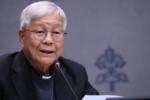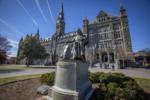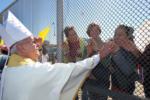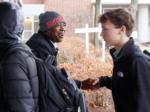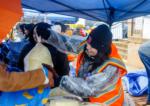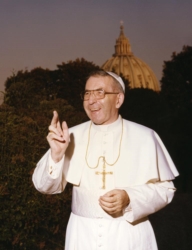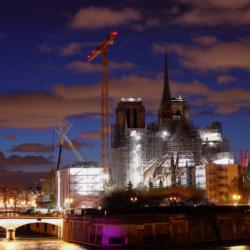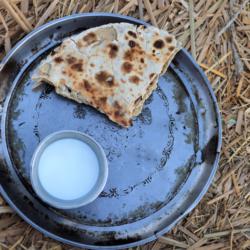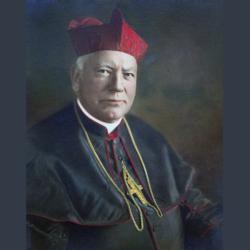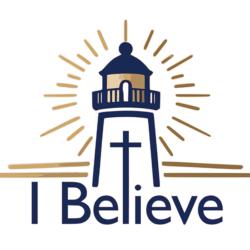‘The smiling pope’ left a lasting legacy
It has been 30 years since the Church had its year of three popes. The first, Pope Paul VI, led the Church from June 21, 1963, to Aug. 6, 1978, through a time of great change, including the completion of the Second Vatican Council, as well as the social and economic upheavals of that era. The third, Pope John Paul II, sat in the chair of St. Peter from Oct. 22, 1978 until April 2, 2005, and during that time saw his influence topple tyrannical governments and through his pastorship established new paths to evangelize, especially the youth of the Church.
In between these two monumental pontiffs there was a humble man who for 33 days, from his Aug. 26, 1978, election until his Sept. 28 death, was known around the world as “the smiling pope.” He took the name Pope John Paul I, in honor of his two predecessors. Pope Blessed John XXIII had ordained him a bishop in 1958 and Pope Paul VI elevated him a cardinal in 1973. He was born Albino Luciani Oct. 17, 1912, in the Northern Italian village of Forno di Canale.
“I think we were all stunned,” said Cardinal Seán P. O’Malley, who was a priest at the time working in Washington with a ministry for Central American immigrants. “It was quite a summer. It was such a surprise to see a Holy Father pass away so quickly.”
The cardinal said when he reflects on that time, the brief pontificate of Pope John Paul I served as a necessary pause in the history of the Church.
“I think it was his short reign that allowed the College of Cardinals to make the bold move to elect a non-Italian. Of course, they were impressed by the vitality of the Church in Poland and the outstanding participation of John Paul II, then Cardinal Karol Wojtyla, in the Second Vatican Council. They were impressed by his intellectual and his pastoral abilities,” he said.
“It seems almost absurd to have a pope for just one month, but that month allowed the Church to look outside the box and seek new leadership,” he said. “The reign of John Paul II was certainly very significant, and now we have another non-Italian pope in Benedict XVI.”
Raymond Seabeck, who with his wife Lauretta Seabeck founded the Missionary Servants of Pope John Paul I, said they were inspired by the pope’s example. Together, they converted part of their home into the Papa Luciani Center for the Poor, where they collect goods for overseas missions and host confirmation retreats.
The center serves as a drop-off point for people who want to donate, he said. When they have enough material to fill a shipboard container, they call for a tractor trailer truck to come up from Elizabeth, N.J., which they load up with the help of 30 or 40 volunteers from their parish at St. Joseph Church in Laconia.
“We have some people who drive hundreds of miles to bring us things. One woman always brings us disposable diapers. Another woman, when she shops for groceries, buys an extra bag of dried beans that she leaves in the truck of her car. When the pile becomes big enough, she brings them over.”
Seabeck said he and his wife pray for the promotion of Pope John Paul’s cause for sainthood and they are convinced he will eventually be canonized.
“He was like a shooting star,” said Rocco Palmo, a Philadelphia-based correspondent for London’s The Tablet, an international Catholic weekly publication. “Those 33 days were full of unscripted joy.”
Palmo said because of the tremendous changes in the Church in the previous two decades there were expectations that the new pope would roll back reforms. Instead, he refocused the Church away from the discussions and back to pastoralship.
It was a shame Pope John Paul did not have time to develop his own magisterium, he said. “But in a way, his brief reign was the simplest and most beautiful of all.”
Palmo said the pope’s light and informal manner was a relief to the Church that had become heavy from the Second Vatican Council and its aftermath. By taking office at an installation Mass rather than the traditional coronation, Pope John Paul I signaled a shift in the symbols of the office from the crown to the pallium of the archbishop. “It was a shift of burdens from the head to the shoulders.”
Lori Pieper, a historian of Pope John Paul I, said the pope had trouble sleeping since he moved into the papal apartments and would often wake at two or three o’clock in the morning, then read in bed until it was time to begin his day.
At 4:30 in the morning on the day of the death of Pope John Paul I, Sister Vincenza, a sister who serves in the papal residence, placed a cup of coffee on a table outside the bedroom and knocked on the door. At five, the sister returned to pick up the empty cup, but found it untouched, said Pieper, who lives in New York City, and in addition to her biography of the pontiff, is translating his writings and talks from Italian to English.
When the sister opened the door she found the pope’s lifeless body and she ran to get help, she said.
Pieper said the cause for sainthood is moving through the Vatican’s process. “On June 27, the Congregation for the Causes of the Saints has signed the degree of validity on the acts of the diocesan process for beatification of Papa Luciani.” Pope John Paul I was named a Servant of God in 2003.




